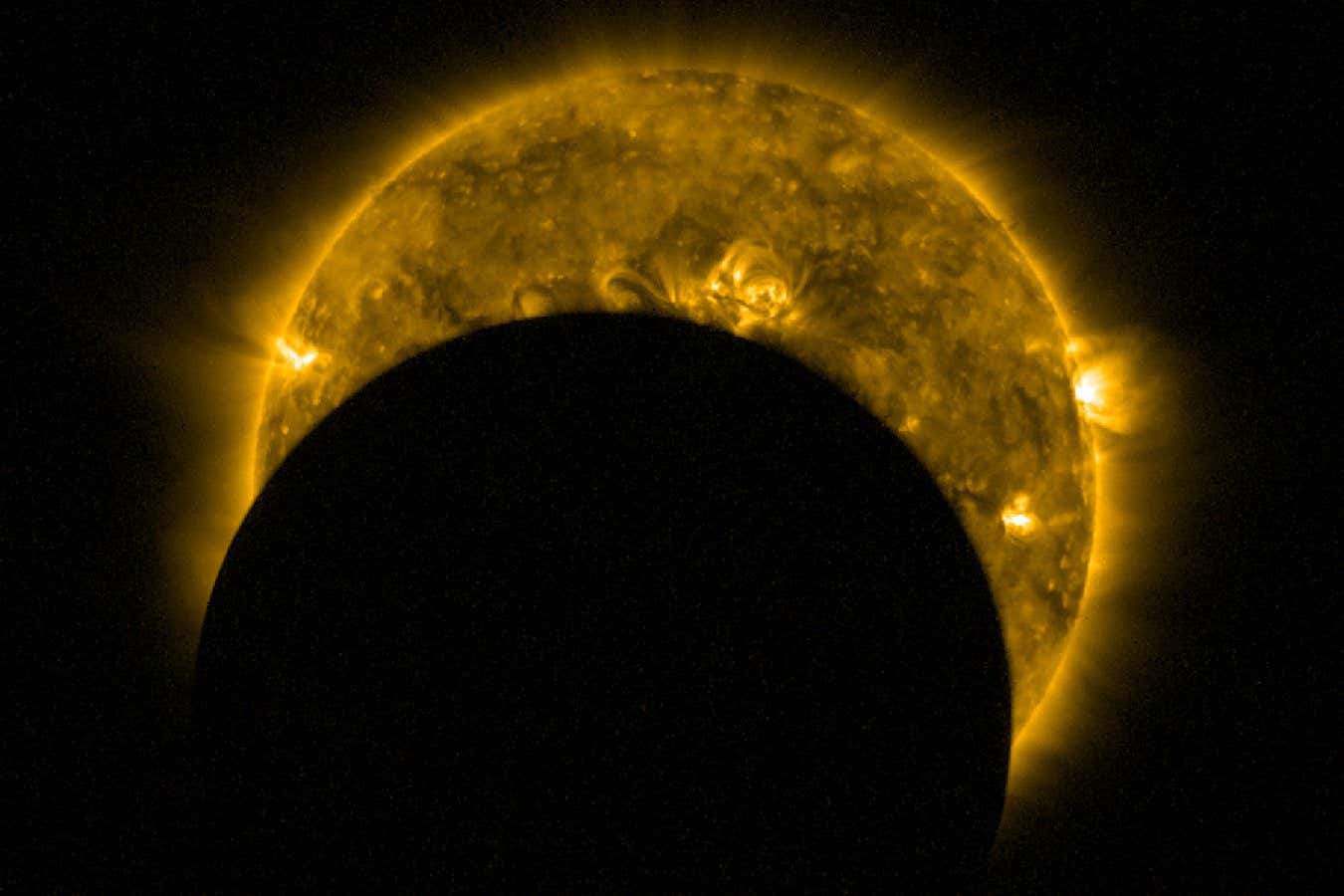Records of total solar eclipses go back thousands of years, and in all that time they have allowed scientists to uncover key information about not just the sun but the whole universe
By Leah Crane
1 April 2024
A total solar eclipse is a great opportunity to learn more about the sun
ESA/Royal Observatory of Belgium
A total solar eclipse occurs somewhere on Earth about every 18 months, and that has been the case for all of human history. Naturally, people have been studying these dramatic events for just as long, with the first known written record of an eclipse dating back more than 3000 years. In all that time, we have learned an astonishing amount from total eclipses about the sun, Earth and even the fundamental laws of physics.
For much of history, totality – the period of time in which the moon covers the entire disc of the sun – has been the only time that humans could see the sun’s faint outermost layer. This wispy shroud of plasma, called the corona, has been central to many of the scientific advances that have come from the study of eclipses.
Solar Eclipse 2024
On 8 April a total solar eclipse will pass over Mexico, the US and Canada. Our special series is covering everything you need to know, from how and when to see it to some of the weirdest eclipse experiences in history.
Read more
Advertisement
The corona is home to many of the sun’s most fascinating phenomena, including coronal mass ejections (CMEs), which occur when the sun’s churning magnetic field blasts strands and blobs of material out into space. CMEs that hit Earth can damage satellites and the electrical grid, and they can be extraordinarily dangerous to astronauts out in space, beyond the protection of Earth’s atmosphere.
“The magnetic activity of the sun changes over time and changes across the surface of the star,” says Meredith MacGregor at Johns Hopkins University in Maryland. So far, we don’t have a good way to predict this activity. But we might be able to begin doing so by studying the corona.
